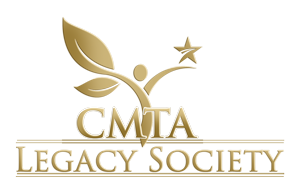CMTA-STAR Awards Researcher $98,985 For CMT1A Project Using Dental Pulp Stem Cells
(Glenolden, PA, November 4, 2021) The Charcot-Marie-Tooth Association Strategy to Accelerate Research (CMTA-STAR) awarded $98,985 to Esther Wolfs, MSc, PhD, at Hasselt University in Belgium to develop new cell-based disease models of CMT1A extracted from the pulp of teeth that can be used to test the efficacy of drug candidates in a lab dish.CMT, a degenerative neuromuscular disease, recently entered the national spotlight when country music legend Alan Jackson announced he has the disease. CMT affects the long, or peripheral, nerves to the hands and feet. As the nerves die, the muscles around them follow suit. CMT1A, the most common type of CMT, is caused by a duplication of the PMP22 gene.
Dr. Wolfs is developing a new human stem cell model for CMT1A using stem cells extracted from the pulp of teeth removed during dental procedures. Dental Pulp Stem Cells (hDPSCs) are easy to isolate and provide a viable, bankable alternative to induced Pluripotent Stem Cells (iPSCs), which are derived from blood or skin cells.
Wolfs’ approach will not only provide insight into the molecular pathways involved in CMT1A, it will also enable the CMTA’s preclinical testing alliance to quickly test the effects of a potential therapeutic. The initial study’s first goal is to demonstrate that the hDPSCs can form myelin—the protective coating around the “wire” of the nerve—in a dish. The second goal is to show that the cells can be transformed to express CMT1A disease markers as seen in Schwann cells from patients.
Currently, there are no human stem cell models that accurately mimic Schwann cells from CMT patients and the lack has been a considerable roadblock. New research tools to rapidly identify potential CMT1A therapeutics and to study what causes the disease at a cellular level are urgently needed. A reliable system that accurately reports the function in the affected Schwann cell will directly facilitate the identification of potential new drug targets and speed the design of new therapeutics. If successful, the work will be translatable to other CMT Type 1s that also result from a genetic defect in the myelin-producing Schwann cell of peripheral nerves.
All of the CMTA’s research efforts are consolidated under the banner of STAR—which brings together the world’s largest network of biotech research partners, research scientists, clinicians and patients—and funds more CMT grants than any other philanthropic organization to increase the likelihood of finding a cure. Since 2008, the CMTA has invested more than $17 million in STAR, with plans to invest another $10 million in the next few years.
About CMT
Charcot-Marie-Tooth disease, or CMT, was named after the three physicians who first described it: Drs. Jean-Martin Charcot, Pierre Marie, and Howard Henry Tooth. CMT is a group of like diseases caused by inherited genetic mutations that damage the peripheral nerves outside of the brain and spinal cord. Scientists have identified over 100 different gene mutations causing CMT. Most people (90%) have one of four types of CMT: CMT 1A (PMP22); CMT 1B (MPZ); CMT 2A (MFN2) and CMT 1X (GJB1). It is estimated that CMT affects 3+ million people worldwide, regardless of gender, race, or ethnicity. More information can be found at https://www.cmtausa.org/understanding-cmt/what-is-cmt
About the CMTA
The CMTA is the largest philanthropic funder of CMT research worldwide. The CMTA’s Strategy to Accelerate Research (STAR) brings the best CMT researchers, clinicians, and experts in therapy development together with pharmaceutical and biotechnology companies and patients to expedite the development of treatments for CMT. The CMTA is also actively working to help improve the quality of life for all families living with CMT by offering educational programs and materials, hosting patient and professional conferences, providing support to families through its nationwide branch system through North America and more. More information can be found at www.cmtausa.org





